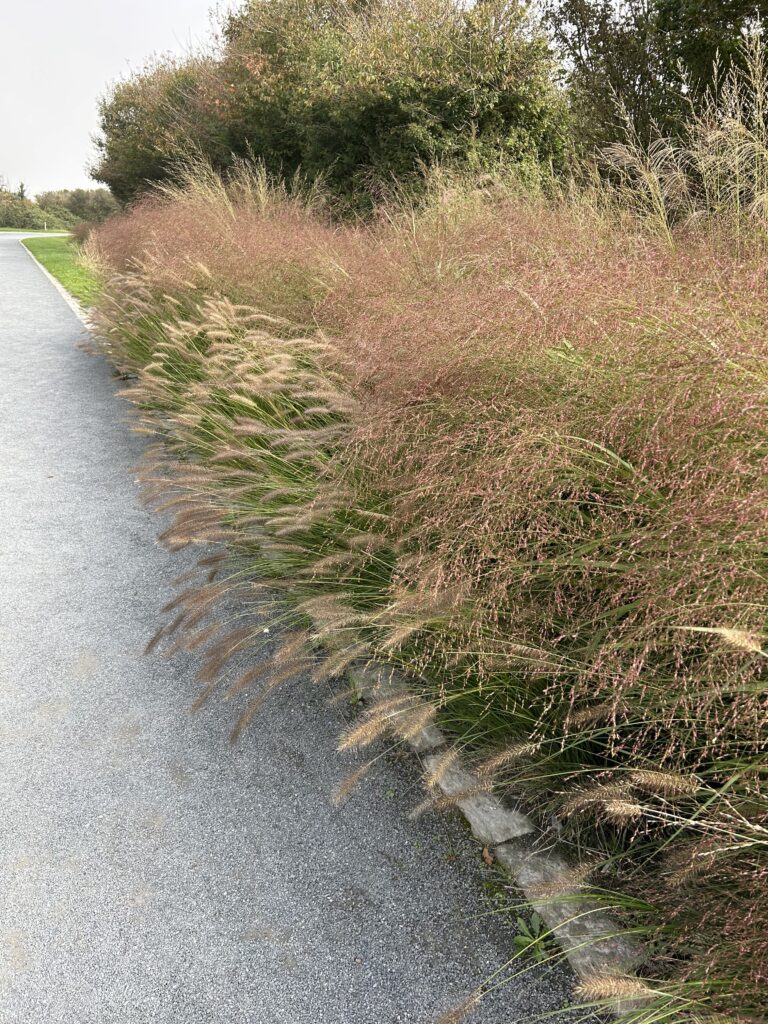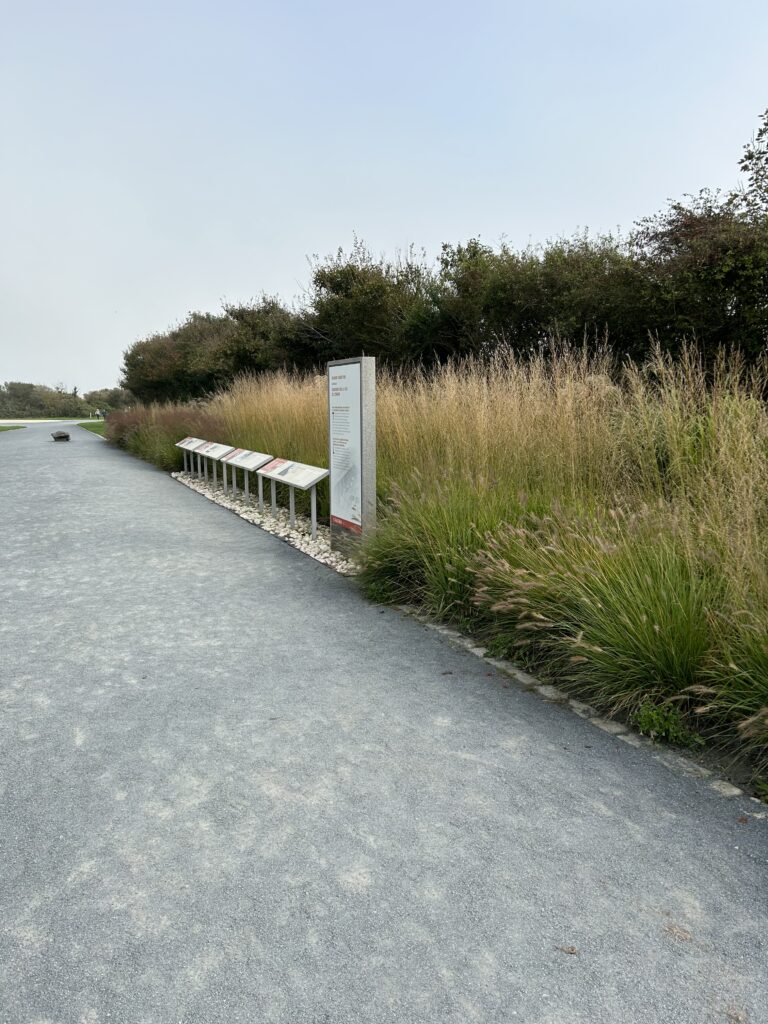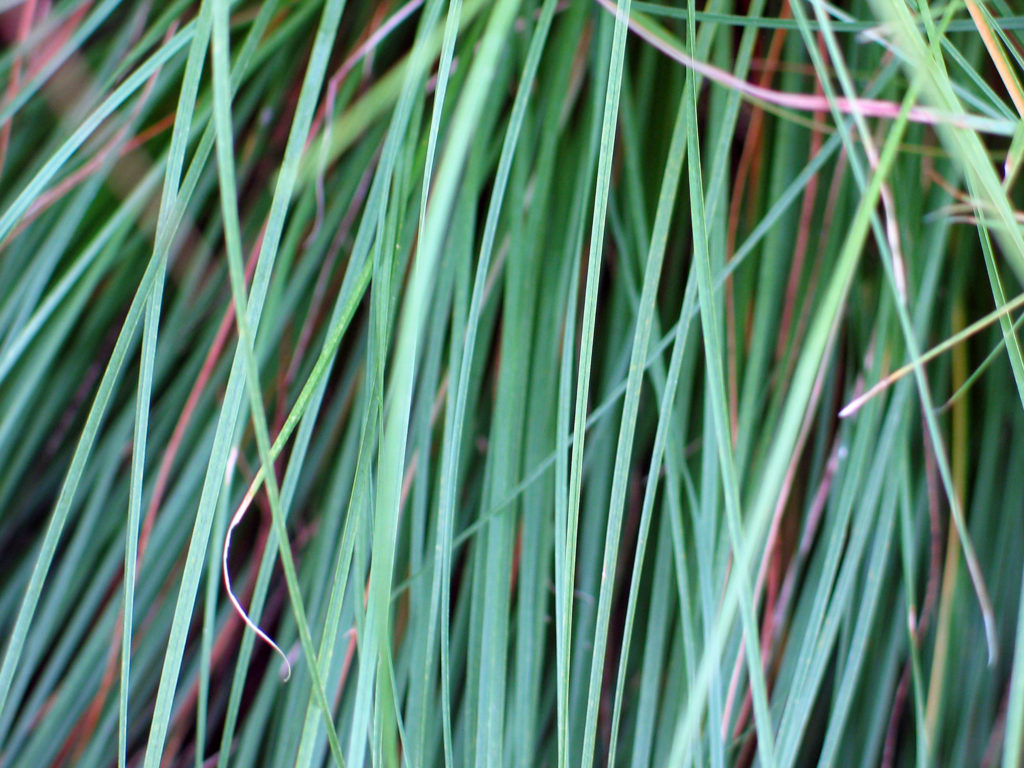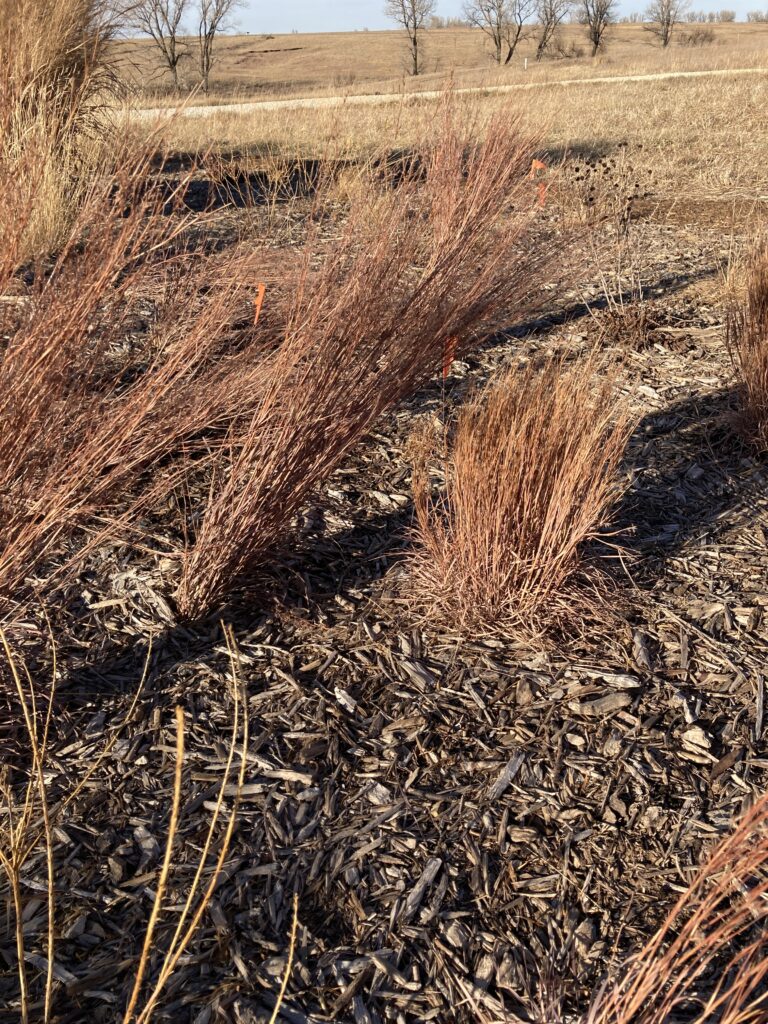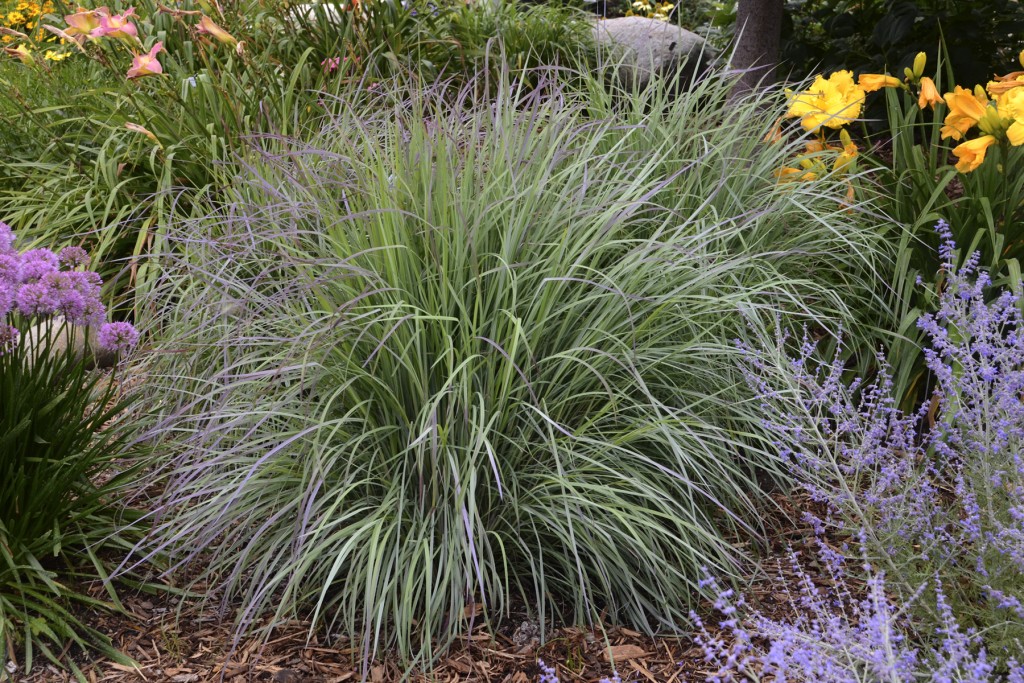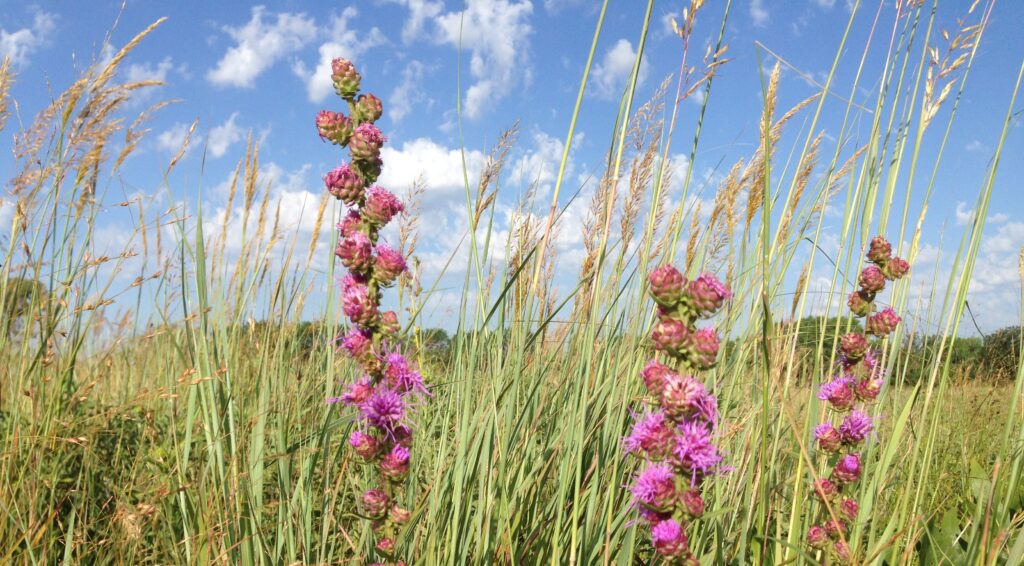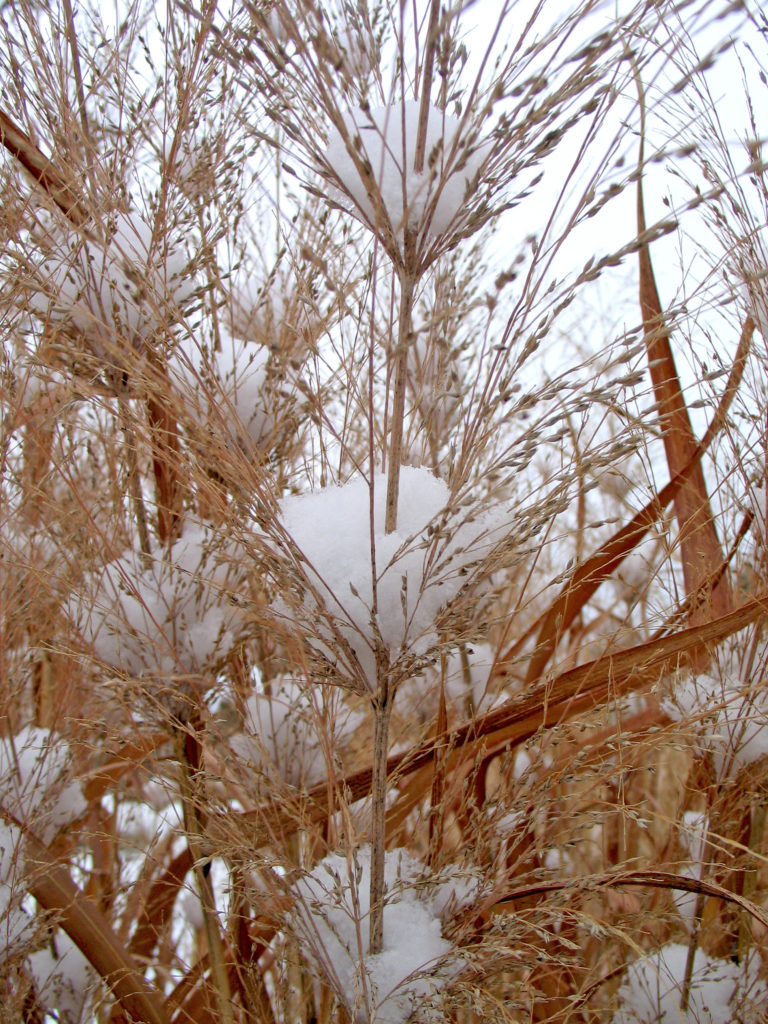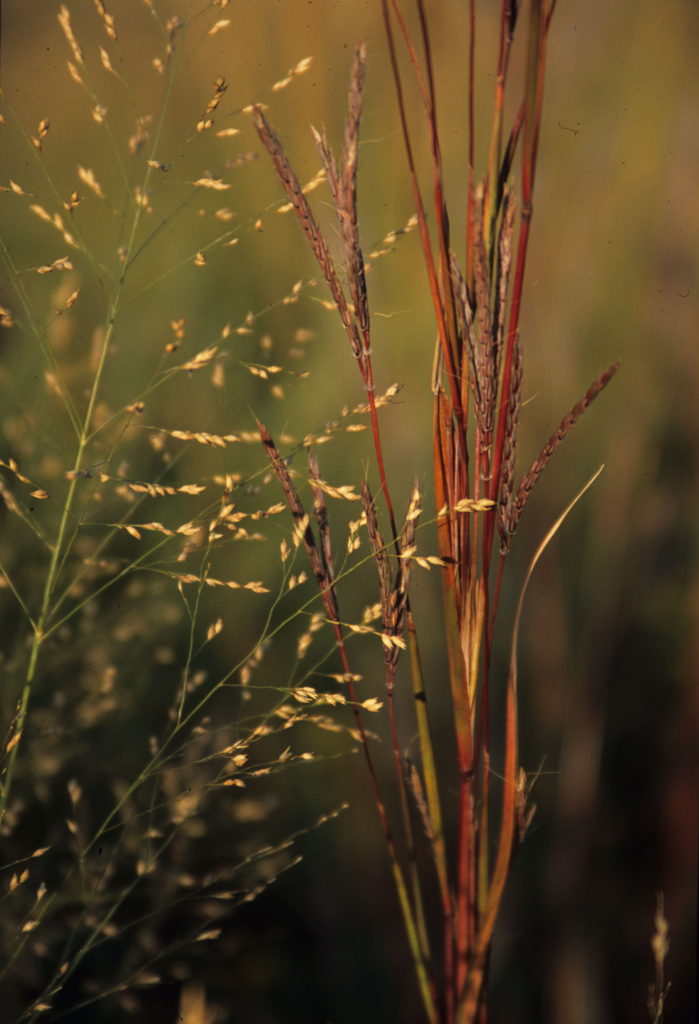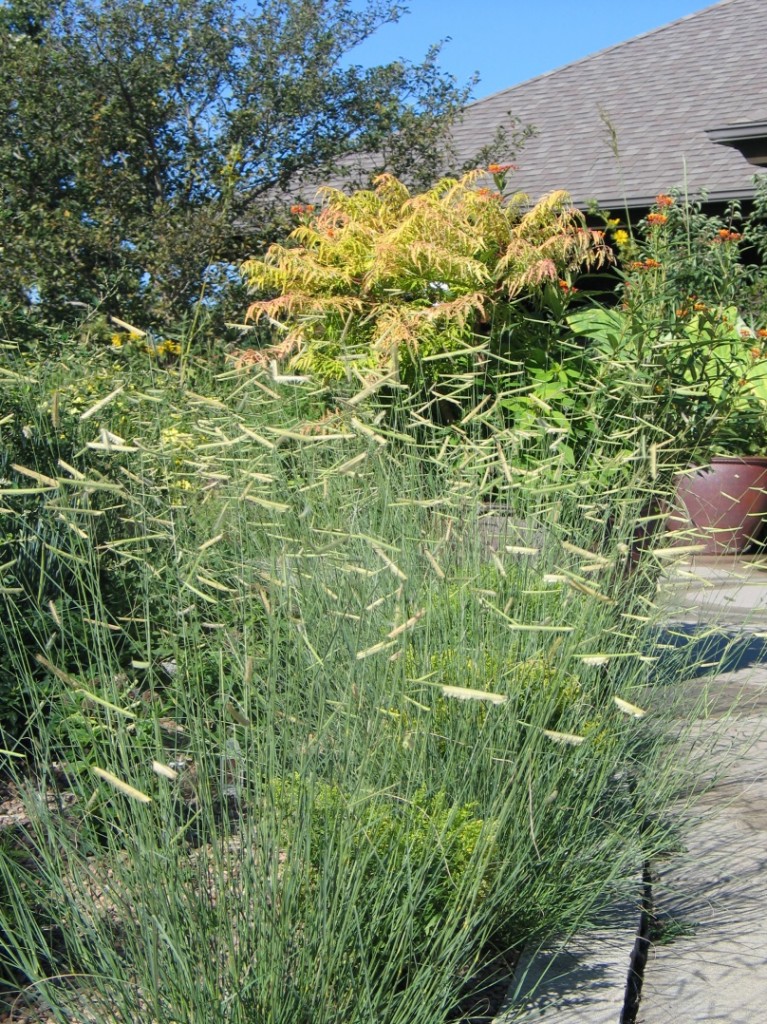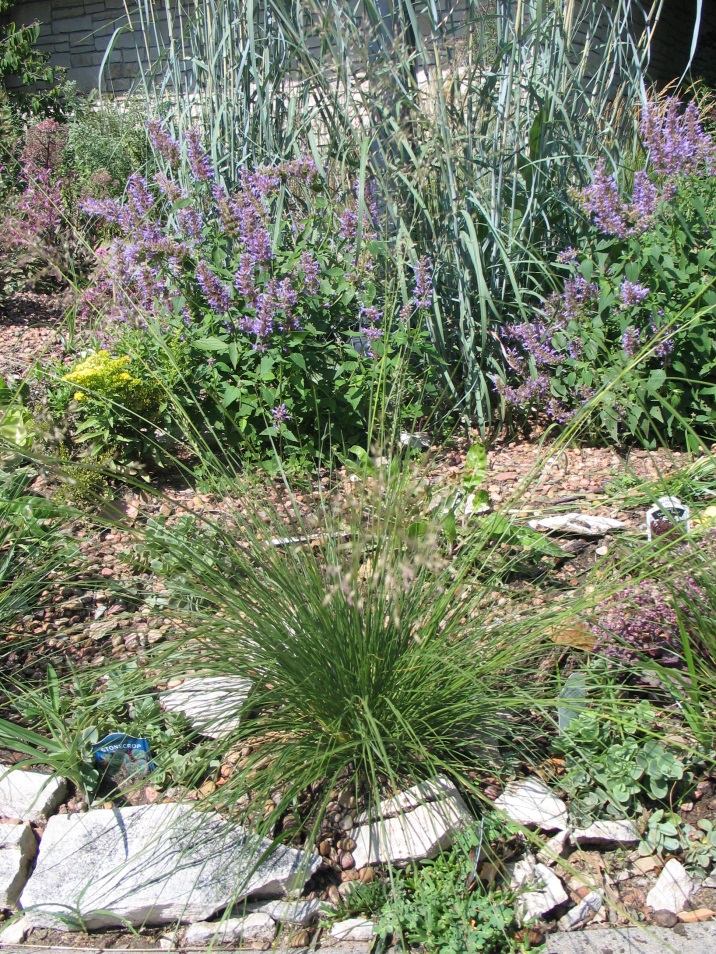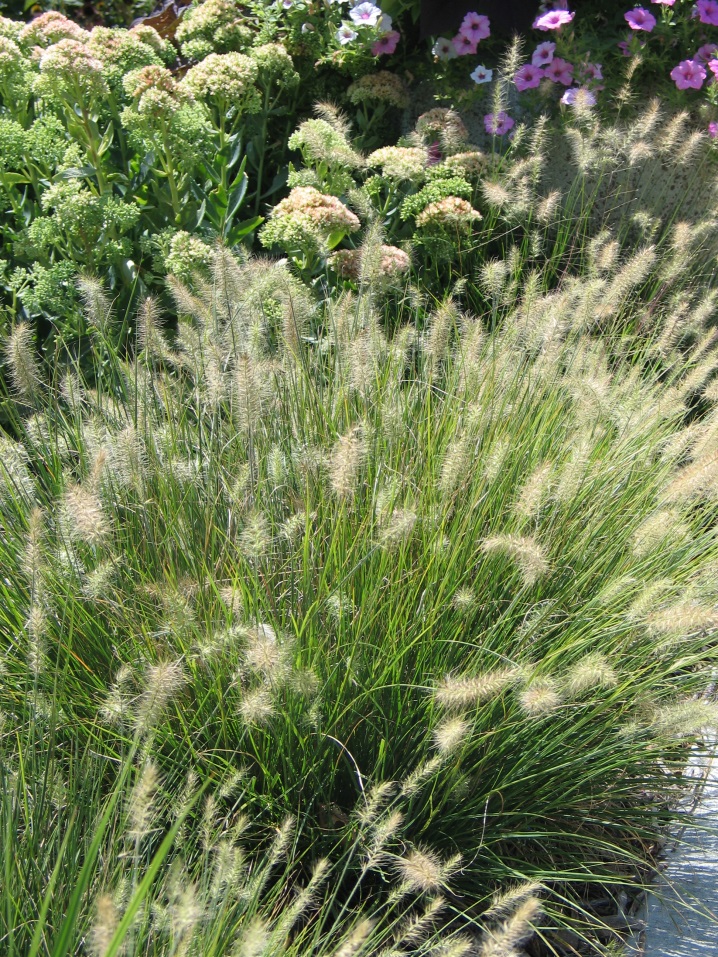When most people visit Normandy, they aren’t coming for the gardens. World War II historians flock here from all over the world to learn, explore, and pay tribute to the thousands who died here liberating France, and later freeing Europe. I personally love this area of France. It is my favorite by far, not only for its history, but for its beautiful, rugged landscape and friendly people. (And did I mention Normandy is the home of Camembert cheese?)
Of course, no trip to Normandy would be complete without a stop at the American Cemetery and Memorial. And though we aren’t always looking for great garden design, sometimes I can’t help but notice!
Design That Sets the Tone
This is a garden bed at the entrance to the Normandy American Cemetery and Memorial. It surprised me! Modern and understated, blending so well into the blocky, simplistic design of the memorial I almost walked right past it. It is made up of two species: likely Calamagrostis ‘Karl Forrester’ and Gaura lindheimeri, also known as white beeblossom.
This is a perfect example of matching the tone of the place to the design. At such a somber site, it might feel strange to have anything too colorful, jazzy, or disorganized. Instead, the grasses stand tall and stately, the Gaura wispy and low. The combination is perfect here, and when a bit of wind comes through them the planting has wonderful movement, and an ethereal quality. If a garden could whisper, this one would.
Ornamental Grasses
I spotted some familiar North American native grasses as I explored the well kept grounds. Through the memorial and onto the walkway to the cemetery, there is a border of switchgrass and fountaingrass. This combination was repeated multiple times along the way, softening the edges of the walkway – pink and pillowy, and always in motion thanks to the sea winds off the beach. The shrubs and trees behind created a three tiered border – making the walk feel a bit enclosed and sheltered from the otherwise open plain. After a tearful trip through the memorial hall and museum, it is a lovely feeling to be ushered along by this soft texture and gentle swaying movement, mimicking the waves on the beach.
Beauty in the Margins
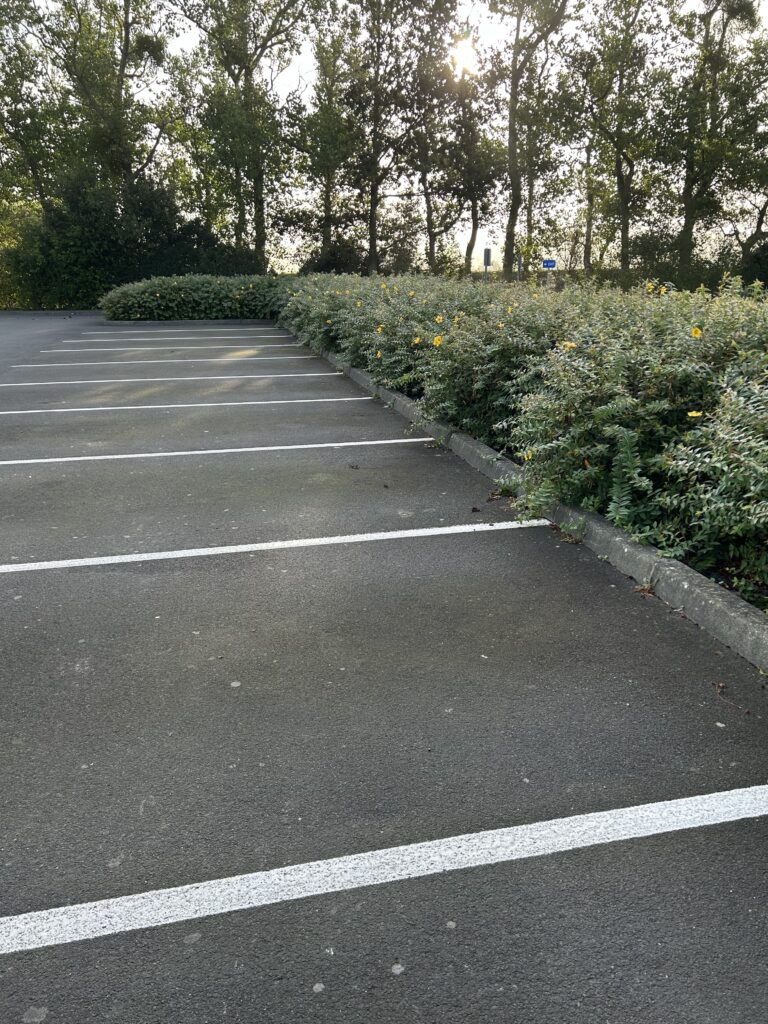
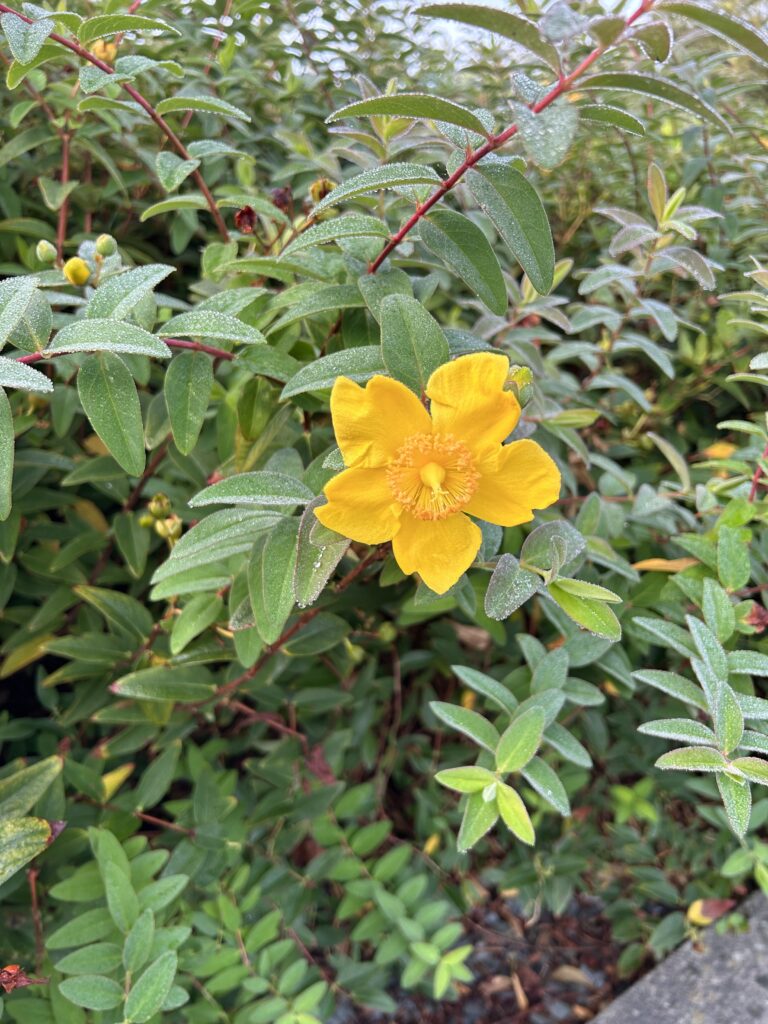
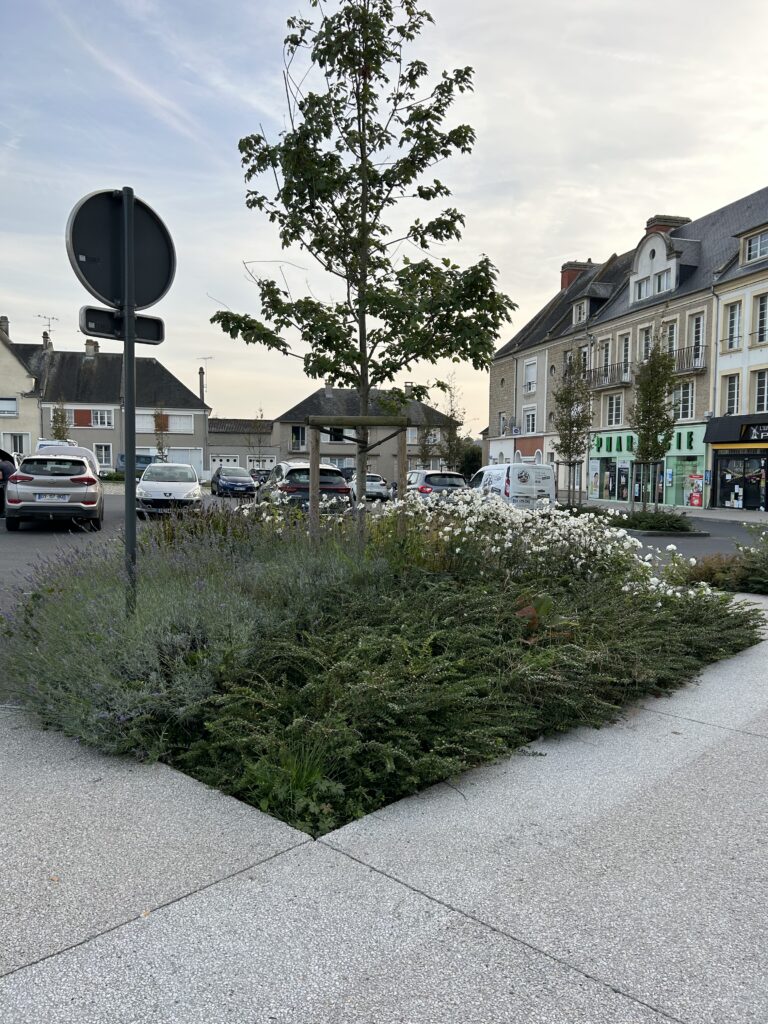
In Normandy, even the parking lots are beautiful! I was impressed by the city planning. In the many small towns in the area around the beaches, there was an effort to create greenspace at every opportunity. Instead of bare, sparse plantings dominated by mulch we are used to seeing in parking lot islands, I encountered lush shrubs and thickly planted perennials. This is simply a choice of good design — choose plants that thrive under harsh conditions, plant thick enough that weeds cannot get through, and stick to mass plantings for the greatest effect.
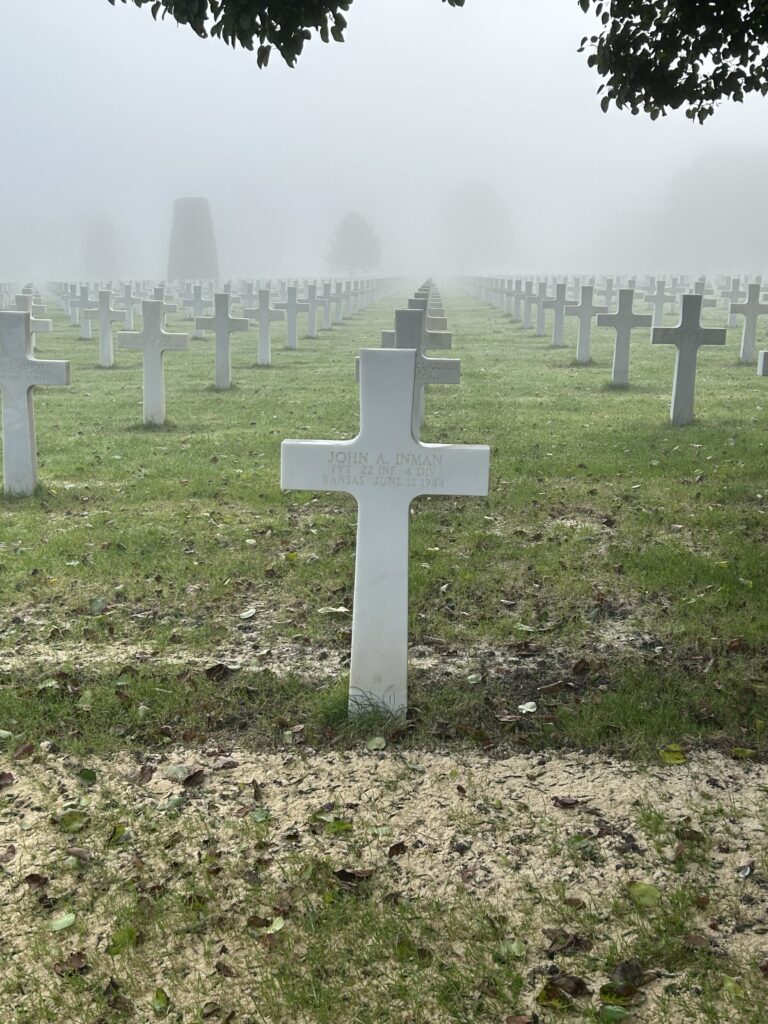

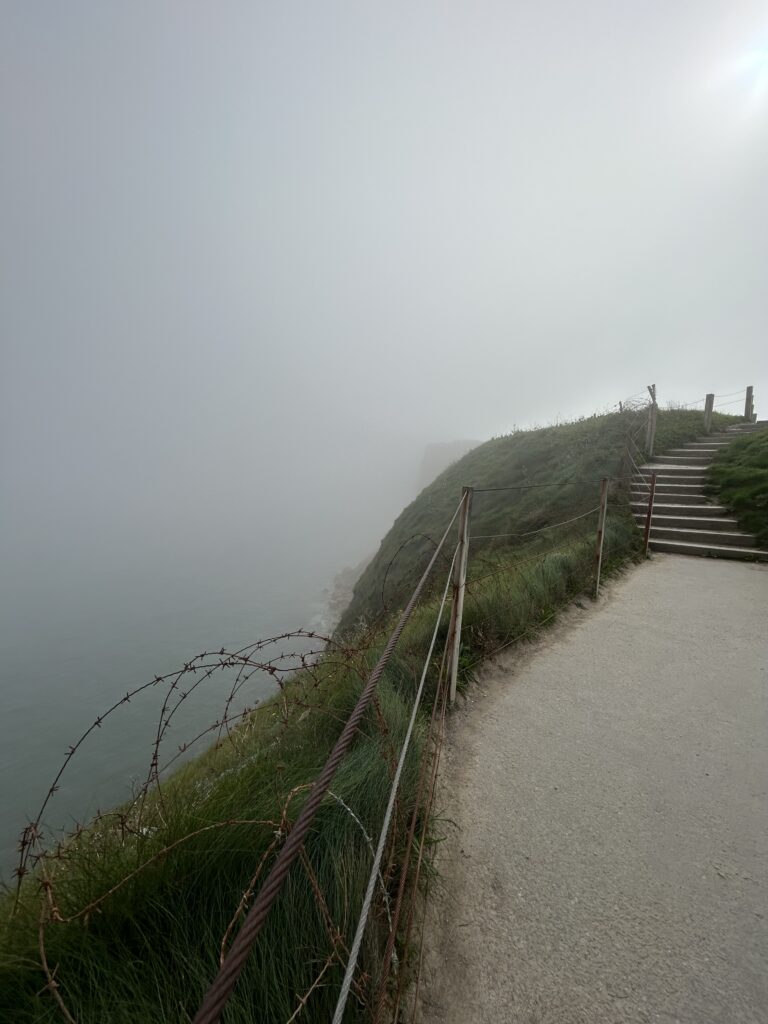
Landscape vs Landscaping
The genius of the plantings in this region was that they seemed to blend right into the surrounding rural landscape. I can’t be sure whether the plants used were always native to the area or just well adapted ornamentals. But regardless, great care was taken to blend and match the natural shapes and textures of the seaside climate. Sometimes with grasses that bring to mind sandy hues and beach waves. Or even by using dense shrubs planted in layers, to mimic the famous hedgerows of the area. We can bring this lesson back home by taking careful note of the common shapes, colors, and textures in the natural landscape of our area. Using that, we can recreate those things in our residential landscaping on a smaller scale. It is an abstract way of designing, but the pay off is a garden that feels balanced and very much at home.


